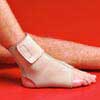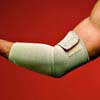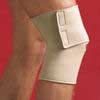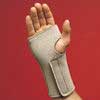
Rheumatoid Arthritis
Introduction to Rheumatoid arthritis
Rheumatoid arthritis can be classed as a chronic disease which causes inflammation of the lining, or synovium, of the joints. It can lead to long-term joint damage, chronic pain, loss of function and disability.
Rheumatoid arthritis progresses to cause swelling of the joints which inturn leads to pain, warmth, stiffness and redness around the joint. As the diseases becomes established it can also cause joints to lose their shape and alignment, more pain, and loss of movement.
As rheumatoid arthritis is a chronic disease it may not go away and will continue into old age. Rheumatoid arthritis is a systemic disease, which means it can affect other organs in the body. Early diagnosis and treatment of rheumatoid arthritis is critical if you want to continue living a productive lifestyle. Studies have shown that early aggressive treatment of rheumatoid arthritis can limit joint damage, which in turn limits loss of movement, decreased ability to work and potential surgery.
Rheumatoid arthritis affects 1 percent of the U.S. population or 2.1 million Americans and approximately 7 million UK citizens. Rheumatoid Arthritis affects 3 times more women than men and whilst both sexes share many of the same problems, there are issues of interest only to women, such as Drugs and Breastfeeding. Advancements of rheumatoid arthritis research has resulted in patients living happier and more productive lifestyles.
What causes rheumatoid arthritis?
The cause of rheumatoid arthritis is unknown. Viruses, bacteria, and fungi have long been suspected, none has been proven as the cause. Numerous theories exist regarding the cause of rheumatoid arthritis. Some scientists believe that rheumatoid arthritis may be genetically inherited. It is also suspected that certain infections or environmental factors (a recent study highlighted individuals working with oil as being more susceptible to the disease) might trigger the immune system to attack the body's own tissues, resulting in inflammation in various organs of the body such as the lungs or eyes. Recently, scientists have reported that smoking tobacco increases the risk of developing rheumatoid arthritis.
Regardless of the exact trigger, the result is an immune system that causes inflammation in the joints and occasionally other tissues of the body.
What are the symptoms of rheumatoid arthritis?
The symptoms of rheumatoid arthritis come and go, depending on the degree of tissue inflammation. When body tissues are inflamed, the disease is active. When tissue inflammation subsides, the disease is inactive (in remission). Remissions can occur spontaneously or with treatment, and can last weeks, months, or years. During remissions, symptoms of the disease disappear, and patients generally feel well. When the disease becomes active again (relapse), symptoms return. The return of disease activity and symptoms is called a flare. The course of rheumatoid arthritis varies from patient to patient, and periods of flares and remissions are typical.
When the disease is active, symptoms can include fatigue, lack of appetite, low grade fever, muscle and joint aches, and stiffness. Muscle and joint stiffness are usually most notable in the morning and after periods of inactivity. Arthritis is common during disease flares. During flares, joints frequently become red, swollen, painful, and tender. This occurs because the lining tissue of the joint (synovium) becomes inflamed, resulting in the production of excessive joint fluid (synovial fluid). The synovium also thickens with inflammation (synovitis).
In rheumatoid arthritis, multiple joints are usually inflamed in a symmetrical pattern (both sides of the body affected). The small joints of both the hands and wrists are often involved. Simple tasks of daily living, such as turning door knobs and opening jars can become difficult during flares. The small joints of the feet are also commonly involved. Occasionally, only one joint is inflamed. When only one joint is involved, the arthritis can mimic the joint inflammation caused by other forms of arthritis such as gout or joint infection. Chronic inflammation can cause damage to body tissues, cartilage and bone. This leads to a loss of cartilage and erosion and weakness of the bones as well as the muscles, resulting in joint deformity, destruction, and loss of function. Rarely, rheumatoid arthritis can even affect the joint that is responsible for the tightening our vocal cords to change the tone of our voice, the cricoarytenoid joint. When this joint is inflamed, it can cause hoarseness of voice.
Because rheumatoid arthritis presents itself on many different fronts and in many different ways, treatment must be tailored to the individual, taking into account the severity of your arthritis, other medical conditions you may have and your individual lifestyle. Current treatment methods focus on relieving pain, reducing inflammation, stopping or slowing joint damage and improving your functioning and sense of well-being.
Rheumatoid arthritis is a serious disease. It is crucial that you get an early diagnosis and work with your doctor to find the best treatment for you so that you can live well with it. Just a few years ago, your doctor might have only prescribed an over-the-counter pain reliever, like an analgesic or non-steroidal, anti-inflammatory drug (NSAID), until you experienced increased disease progression. Now, with the improvement of available medications, doctors know that they have to be more aggressive early on in order to prevent severe deformity and joint erosion.
Health-Care Professionals
In order to get the proper treatment for rheumatoid arthritis you need to make sure you have the proper health-care team. Your primary doctor for treating rheumatoid arthritis should be a rheumatologist , a physician with special training in arthritis and other disease involving diseases of the bone, muscles and joints. Your rheumatologist will coordinate with your primary care physician. Other team members may include a physical therapist, an occupational therapist, a nurse, a psychologist, an orthopaedic surgeon, a physiatrist, and a social worker. Learn more about these specialists in the Glossary of Health Professionals.
Medications
The proper medication regimen is important in controlling your rheumatoid arthritis. You must help your doctor determine the best combination for you. The main categories of drugs used to treat rheumatoid arthritis are:
Nonsteroidal Anti-Inflammatory Drugs (NSAIDs): These drugs are used to reduce inflammation and relieve pain.
Analgesic Drugs: These drugs relieve pain, but do not necessarily have an effect on inflammation.
Glucocorticoids or Prednisone These are prescribed in low maintenance doses to prevent joint damage.
Disease Modifying Antirheumatic Drugs (DMARDs): These are used with NSAIDs and/or prednisone to slow joint destruction caused by RA over time.
Exercise
Exercise is an important component in staying healthy when you have rheumatoid arthritis. Moderate physical activity on a regular basis help decrease fatigue, strengthen muscles and bones, increase flexibility and stamina, and improve your general sense of well-being. Joint flexibility is especially important when you have rheumatoid arthritis because stiff joints means inability to do daily tasks, such as buttoning a shirt or starting the car. Learn more about the types of exercise that can help you.
Recommended Treatments







Click here to view supports that provide heat and mild compression to help arthritis sufferers

















